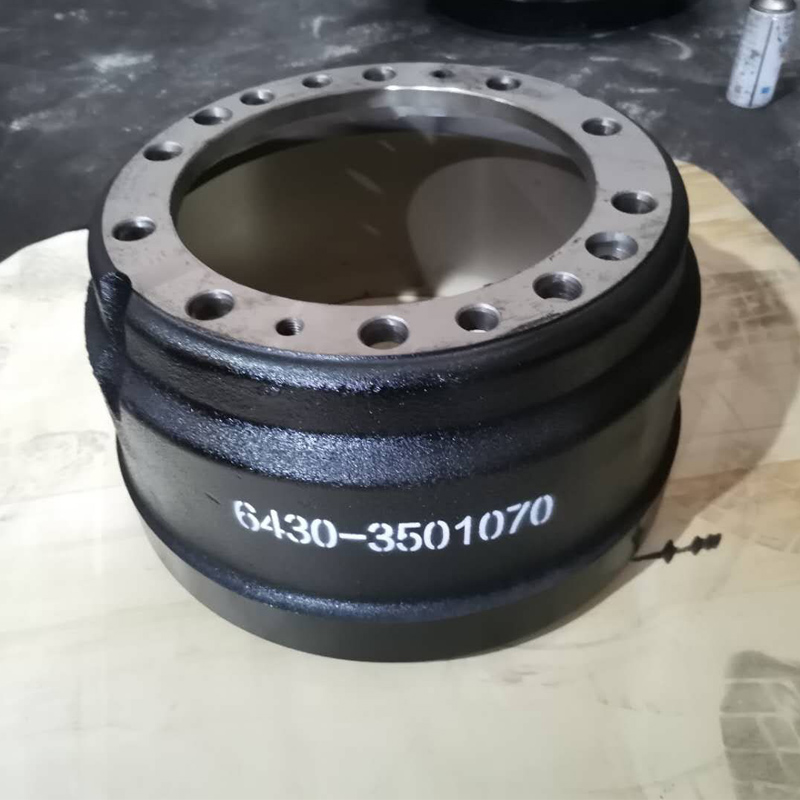Noy . 21, 2024 22:07 Back to list
brake drum casting process
The Brake Drum Casting Process An Overview
The brake drum is a critical component in the braking system of a vehicle, playing an essential role in ensuring safety and performance. The manufacturing of brake drums involves a meticulous casting process that transforms raw materials into reliable, high-quality products. Understanding this process is key to appreciating the complexities involved in automotive manufacturing.
Raw Materials
The primary material used for brake drum casting is gray cast iron, known for its excellent wear resistance, machinability, and thermal stability. The selection of cast iron is primarily due to its ability to withstand high temperatures and repeated stress, which is crucial for maintaining braking efficiency. Additionally, alloying elements such as nickel, chromium, and molybdenum may be added to enhance the physical properties of the final product, allowing for improved durability and performance under harsh conditions.
Mold Creation
The casting process begins with the creation of molds that shape the brake drum. Molds are typically made using either sand casting or metal casting techniques. Sand casting involves creating a sand mold, which is both cost-effective and suitable for producing intricate shapes. The pattern of the brake drum is first made from metal, wood, or plastic. Once the pattern is complete, it is placed in a sand mixture, which is then compressed to form a cavity replicating the pattern.
On the other hand, metal molds are created for mass production, offering greater durability and precision. While the initial costs of metal molds are higher, they can significantly reduce production time and improve the consistency of the final product.
Melting and Pouring
Once the molds are prepared, the next step is melting the cast iron. This is typically accomplished in a cupola furnace or an electric arc furnace, where the raw iron is heated to temperatures exceeding 1400 degrees Celsius. The molten metal is then poured into the molds, filling the cavities created earlier. The pouring process must be closely monitored to prevent defects such as cold shuts or misruns, which can compromise the structural integrity of the brake drums.
brake drum casting process

Cooling and Solidification
After pouring, the molds are allowed to cool, solidifying the molten metal into the shape of the brake drum. The cooling rate is crucial; too rapid cooling can lead to brittleness, while too slow cooling can cause uneven properties within the metal. The ideal cooling process ensures that the material settles into a homogeneous structure, enhancing the brake drum's overall strength and durability.
Finishing Processes
Once the metal has fully solidified, the molds are removed, revealing the rough cast brake drums. However, these initial castings require several finishing processes, including trimming, machining, and surface treatment. Trimming involves removing excess material, while machining ensures that critical dimensions such as the inner diameter (for fitting the brake shoes) and outer diameter are accurate. Surface treatments, such as shot blasting or coating, are often applied to enhance rust resistance and aesthetic appeal.
Quality Control
Quality control is paramount throughout the casting process. Various tests, including dimensional checks, metallurgical analysis, and non-destructive testing (NDT), are conducted to ensure that the brake drums meet industry standards and performance specifications. These rigorous checks help in identifying any defects early in the production process, thus reducing waste and improving safety.
Conclusion
The brake drum casting process is a blend of art and science, requiring precision and attention to detail at every stage. From selecting the right materials to the final quality checks, each step contributes to the creation of a critical safety component in vehicles. As technology advances, the casting process continues to evolve, focusing on sustainability and efficiency, ensuring that brake drums remain reliable and effective for years to come. Understanding this process not only highlights the engineering expertise behind automotive manufacturing but also underscores the importance of safety in vehicular design.
-
High-Quality Brake Drum MAZ – Durable Drum Brake Drum & Brake Drum and Brake Shoe Solutions
NewsJul.04,2025
-
Brake Drum Man - High-Quality Drum Brake Drums & Brake Shoes for Reliable Performance
NewsJun.24,2025
-
High-Quality Brake Drum Kamaz – Durable Drum Brake Drum & Brake Shoe Replacement
NewsJun.10,2025
-
High-Quality Brake Drum Liza for Drum Brake Systems - Superior Durability and Performance
NewsJun.10,2025
-
High-Quality Brake Drum Kamaz – Durable Drum Brake Drum & Brake Shoe Solutions
NewsJun.10,2025
-
Durable Kamaz Brake Drums High-Performance Truck Parts
NewsJun.09,2025
